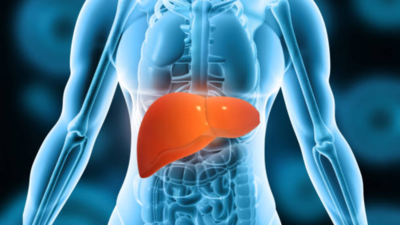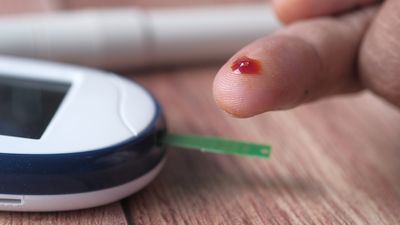How fatty liver worsens diabetes—and vice versa

You’ve probably heard of diabetes. And chances are, you’ve also heard of fatty liver disease. But what if we told you these two chronic conditions—often treated as separate issues—are deeply connected wreaking havoc together behind the scenes?Yes, fatty liver and diabetes don’t just show up at the same party—they feed off each other, quite literally. And the scariest part? Millions of people are dealing with both without even realizing it.Let’s break down how this dangerous duo works—and why tackling them together might just be the key to better health.Fatty liver, or more formally Non-Alcoholic Fatty Liver Disease (NAFLD), is exactly what it sounds like—fat building up in your liver. It’s not just caused by drinking, but also by too much sugar, processed carbs, and a sedentary lifestyle.Your liver’s job is to process everything you eat, filter toxins, and manage energy storage. But when it’s overloaded—especially with excess calories and sugars—it starts stashing away fat like a hoarder. Over time, this buildup can lead to inflammation, scarring (fibrosis), and even cirrhosis, which is irreversible.The early stages often have no symptoms at all, which is why it is called the silent liver disease.Type 2 diabetes is a condition where your body either doesn’t produce enough insulin or becomes resistant to it. Insulin is like a key that helps sugar (glucose) get from your blood into your cells. When this system breaks down, sugar builds up in your bloodstream instead—leading to fatigue, frequent urination, weight gain, and long-term damage to organs like the heart, kidneys, and yes, the liver.Here’s the kicker: insulin resistance is the common thread that ties diabetes and fatty liver together.
How fatty liver and diabetes fuel each other
So, how do these two conditions make each other worse? It’s all about the liver’s role in sugar and fat metabolism.
Fatty liver increases insulin resistance
When your liver becomes stuffed with fat, it starts behaving unhealthy manner. It doesn’t respond to insulin the way it should—meaning your pancreas has to pump out more and more insulin to get the job done. Over time, this leads to insulin resistance, a hallmark of Type 2 diabetes.
High blood sugar feeds liver fat
It goes both ways. If you already have diabetes, your blood is loaded with sugar your body can’t use properly. That excess sugar? The liver turns it into more fat. Over time, this worsens fatty liver disease, which in turn worsens insulin resistance, which makes diabetes harder to control.That’s the toxic loop. One makes the other worse—and the longer the loop runs, the harder it is to break.A growing body of research shows that up to 70% of people with Type 2 diabetes also have fatty liver. And nearly half of those might not even know it. It’s no longer considered a coincidence—it’s now seen as part of a broader metabolic condition doctors call MASLD (Metabolic dysfunction-associated steatotic liver disease), a new term replacing NAFLD.Studies have shown that having fatty liver doubles your risk of developing diabetes, even if you’re not overweight. And once you have both, the risk of heart disease, kidney damage, and stroke rises significantly.“When your blood sugar is high over a long time, it can damage your internal organs, including your liver. Similarly, NAFLD and NASH increase the risk of developing prediabetes or type 2 diabetes. A buildup of fat and damage in your liver can increase your blood sugar levels. NAFLD and type 2 diabetes share many of the same risk factors. These include overweight or obesity, high blood pressure, and high cholesterol. Researchers are seeing increasing numbers of people with both type 2 diabetes and liver disease. In fact, up to 70% of people with type 2 diabetes also have NAFLD,” the US CDC explains.Here’s the frustrating part: fatty liver often goes undiagnosed in people with diabetes—even though the two are so closely linked. Routine diabetes checkups usually include blood tests for glucose and HbA1c, but liver enzyme tests or ultrasounds aren’t always ordered unless something obvious shows up. This means a huge number of patients are managing diabetes without realizing they also need to treat their liver.And that’s a big miss.
Can you fix one by fixing the other?
Here’s the good news: Yes, you can.Fatty liver and Type 2 diabetes might fuel each other, but they also respond to the same remedies:
- Weight loss (even 5–10%) can significantly reduce liver fat and improve insulin sensitivity
- Cutting refined carbs and sugar (especially fructose) helps both blood sugar and liver health
- Intermittent fasting or time-restricted eating shows promise in managing both
- Exercise, especially brisk walking and resistance training, improves insulin action and reduces liver fat
- Sleep and stress management also play underrated but critical roles in metabolic health
Why this matters—more than ever
With lifestyle diseases on the rise it’s becoming clear that we can’t treat diabetes in isolation anymore. We need to think of it as part of a bigger picture—one where the liver, gut, pancreas, and fat cells are all in a complicated dance.Ignoring fatty liver while treating diabetes is like fixing a leak in one room while the whole house is flooding. The problem doesn’t go away—it just shows up somewhere else.






